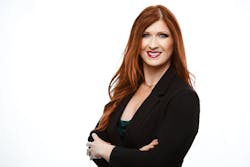Restorative efficiency: How these leading dentists save time without sacrificing quality of care
Think about the procedures you do every day in your dental practice. Picture that last bread-and-butter class II composite. I’d bet you were operating somewhat on autopilot. When we do common restorative dentistry, we enter into what psychologists call a “flow state”; we get in the zone. It comes with great experience and is a sign of mastery.
If there is one downside of being in the flow with restorative dentistry, it’s that we can get too accustomed to doing things the way we did them yesterday. “If it ain’t broke, don’t fix it,” right? Even if we get a little bored from time to time, we might be afraid of making changes to our routine that could compromise patient outcomes. So, we tend to stick with what we know.
But materials evolve. New techniques are discovered. It’s arguably a disservice to our patients if we perform dentistry the exact same way we did a decade ago, ignoring the efficiencies or improved outcomes that could be realized. Getting out of our comfort zone now and then is a good thing.
My favorite way to safely introduce new materials and techniques into my practice is to observe what the thought leaders in our profession are doing. I’ve invited some of the sharpest minds in restorative dentistry to share their favorite tips and tricks with us. These key opinion leaders are continually testing new approaches to even the simplest of procedures. They’ve shortened the learning curve and are sharing what works best in their hands. Join me as we look over their shoulders to see how they tackle everyday dentistry efficiently.
Pamela M. Maragliano-Muniz, DMD, FACP
Howard S. Glazer, DDS, FAGD
wo of my favorite procedures are direct resin veneers and direct resin restorations. To perform these procedures efficiently and reliably, I rely on the OptraSculpt Pad and Instrument Kit from Ivoclar Vivadent. Both the anterior (gray handle) and posterior (black handle) instruments, along with their disposable tips in various shapes, allow you to sculpt and contour composite without the composite sticking to the instrument. And there is no pullback when placing the composite in the deepest portion of the cavity preparation and leave your surfaces about 95% finished and polished.
Joshua Austin, DDS, MAGD
Ian E. Shuman, DDS, MAGD
Stacey L. Gividen, DDS
Clinton Timmerman, DDS
I really like the Bioclear system for class II restorations. The matrices are clear,Erin Elliott, DDS
Editor's note: This article appeared in the August 2021 print edition of Dental Economics.
About the Author

Chris Salierno, DDS
Chief Dental Officer, Tend
Chris Salierno, DDS, is a general dentist from Long Island, New York. He graduated from Stony Brook School of Dental Medicine in 2005. Dr. Salierno lectures internationally on clinical dentistry, practice management, and leadership development. In 2017 he became a chief development officer with the Cellerant Consulting Group, and he was the chief editor of Dental Economics from 2014 to 2021. In 2021, he became the chief dental officer at Tend. He can be reached on Instagram @the_curious_dentist.
Updated May 13, 2022







